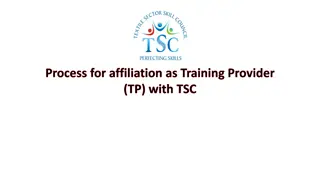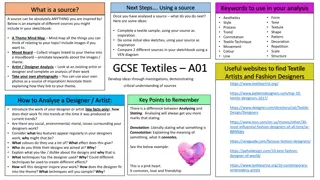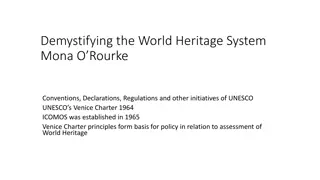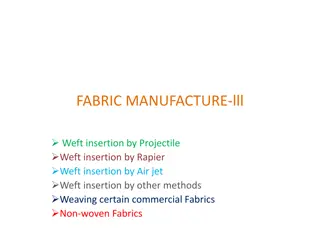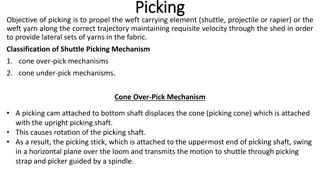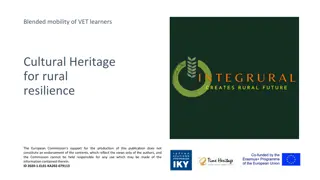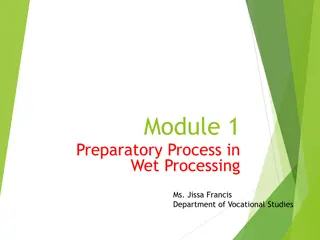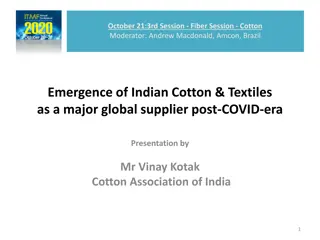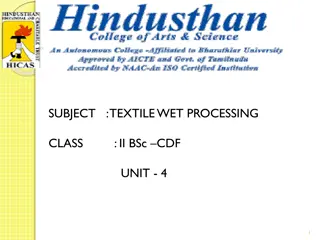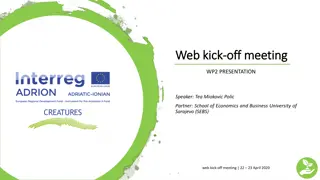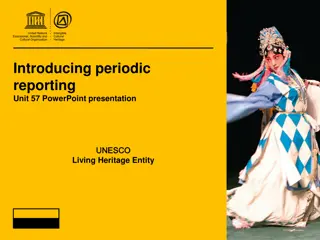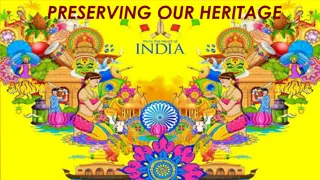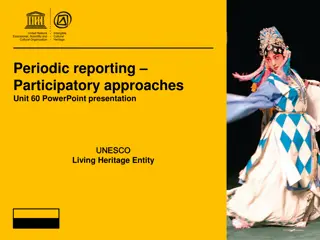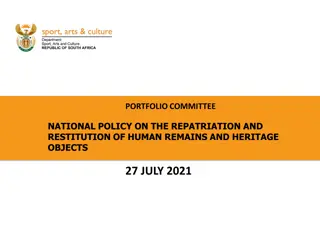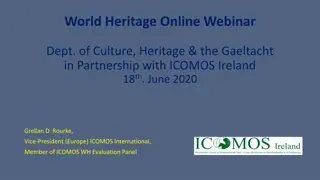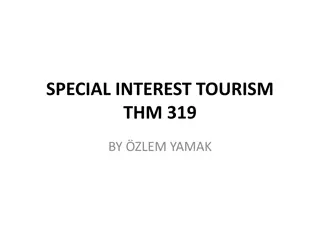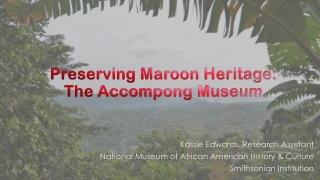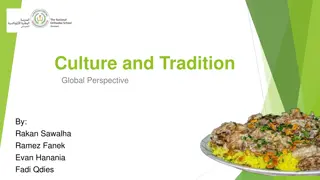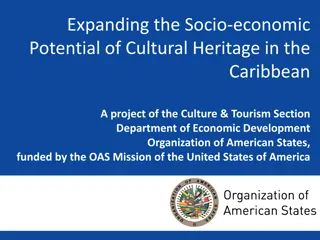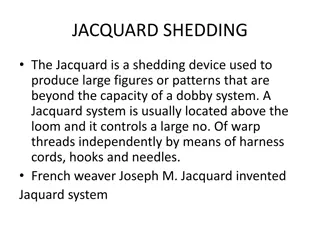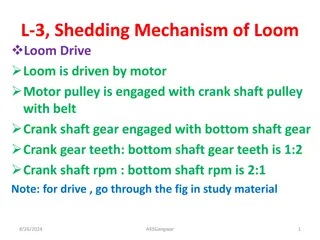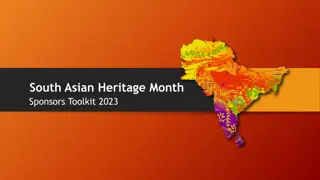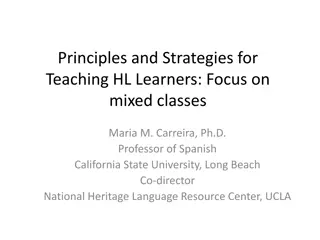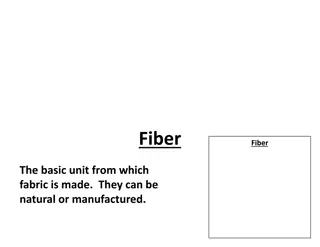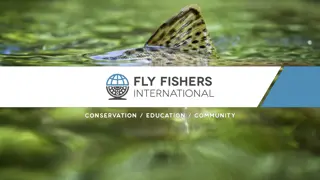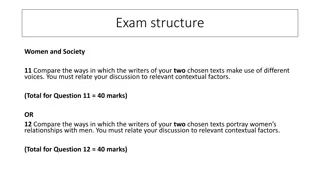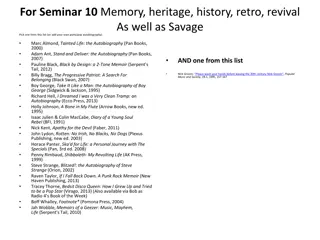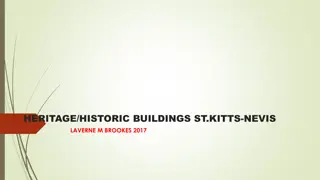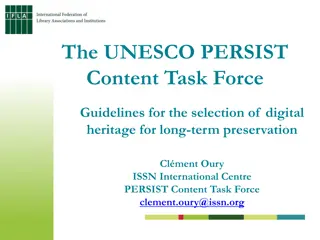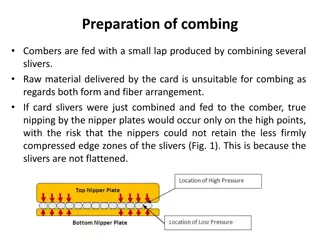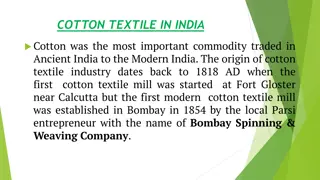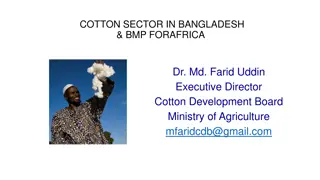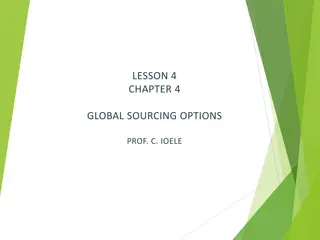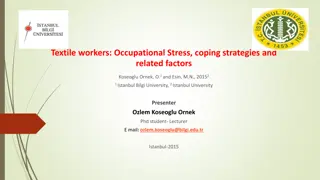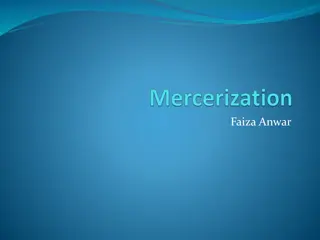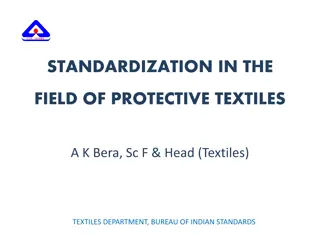Preserving Masalili Textile Weaving: Nusantara's Cultural Heritage Amidst Challenges
Amid the challenges brought by the Covid-19 pandemic, the traditional cloth weavers of Masalili Village in Indonesia are striving to preserve their regional identity and national heritage through textile weaving. This article explores how the youth are involved in safeguarding this cultural masterpiece and maintaining their national identity. The study reveals the significance of regional identity in shaping a nation's collective social identity and emphasizes the need to preserve traditional weaving as a symbol of national pride and cultural heritage.
- Masalili Textile Weaving
- Indonesian Heritage
- Cultural Preservation
- Covid-19 Pandemic
- Youth Involvement
Download Presentation

Please find below an Image/Link to download the presentation.
The content on the website is provided AS IS for your information and personal use only. It may not be sold, licensed, or shared on other websites without obtaining consent from the author. Download presentation by click this link. If you encounter any issues during the download, it is possible that the publisher has removed the file from their server.
E N D
Presentation Transcript
Youth National Identity Masalili Textile Weaving: Nusantara s Masterpiece for the World Irma Irayanti Institut Agama Islam Negeri Kendari, Indonesia http://www.free-powerpoint-templates-design.com http://www.free-powerpoint-templates-design.com http://www.free-powerpoint-templates-design.com http://www.free-powerpoint-templates-design.com
01 02 The pandemic Covid-19 has brought changes and patterns of life in all aspects of life, whether social, political, economic, tourism or creative effort The head of Bappenas revealed 374.4 trillion state losses due to the declining purchasing power of the Indonesian people as a result of the COVID-19 pandemic From the economic aspect, the presence of the pandemic covid-19 is bad news for the weavers in the Masalili Village, in the middle of the vigorous campaign carried out by the Southeast of Sulawesi government and Muna regency that seeks to involve the use of Textile Weaving in various opportunities both in formal and non-formal through national and international event 03 04 This article will try to describe how the activity of the Masalili traditional cloth weavers in preserving local wisdom with the characteristic of Masalili weaving as part of preserving their regional identity from generation to generation in the middle of pandemic Covid-19 as a form of preservation of national identity, especially among the young people as Nusantara s masterpiece for the world. the number of traditional weavers among young people is minimal
Regional Identity as a Forming Element of National Identity National Identity is a manifestation of a collection of social identity that comes from local wisdom and cultural values that grow and develop in a nation Textile weaving Masalili: Indonesia s Masterpiece to the World Textile weaving is a national masterpiece that needs to be preserved. Preserving traditional textile weaving is one of the efforts to foster a love for local wisdom that forms national identity and also fosters a sense of nationalism among citizens THEORITICAL REVIEW
RESEARCH METHOD This study uses a qualitative approach to reveal a phenomenon from the action and experience of the weavers in Masalili, how the weavers survive and preserve the hereditary heritage in the midst of the pandemic covid-19 and how the young people of Masalili maintain the preservation of Masalili Textile Weaving as a Nusantara s masterpiece for the world.
RESULTS AND DISCUSSION Weaving in Masalili Village serves the profession by women as well as a sustainable habit in this village. Although there are some men who help but they are not weavers by profession. The problem is because of the low quality of human resources of the weavers. This study also reveals that weaving activities in Masalili are not only influenced by economic aspects but also by community cultural factors.
Image of Masalili weaver woman in the activity of the weave during the pandemic covid-19 03 02
Age Range of Masalili Weavers 90 The results showed that young people's interest activities was very low, this can be seen from the graph of the weaving profession based on the age range weavers in the village of Masalili as follows: 80 in weaving 70 60 50 Age of Masalili Weaver (Years) 40 of the cloth 30 20 10 0
From the age graph of the Masalili weavers, it can be seen that weaving is popular at the age of over 30 years, even around 21% of the community in the elderly category who still carry out weaving activities even though they are in the unproductive category according to WHO but in Masalili they are still very productive. The following is the percentage of Masalili weavers by age category based on economic and psychological perspectives. Age Category based on Psychological Perspective Age Category based on Economic Perspective 01 Earlt adulthood 18 24 Tahun Adulthood 25 39 Tahun Productive time 15 60 Years Unproductive time > 60 Years Old age / elderly > 60 Tahun Middle age 40 60 Tahun 5% 02 21% 21% 31% 03 43% 04 79%
The government's attention is expected to foster enthusiasm and provide training in the form of additional knowledge for the latest fashion trends while still maintaining the characteristics of local weaving for weaving craftsmen Weaving activities that are considered boring must be made more interactive and interesting for young people. Activities that are more millennial but bring great love and curiosity to the weaving process among young people This is important to preserve the weaving culture in the younger generation and keep it from being disconnected by generations In the future, it is hoped that similar activities can be carried out by regional and provincial governments. The government's lack of attention in promoting traditional cloth weaving activities to the younger generation as well as maintaining and empowering/facilitating these weavers has also become a homework for the government in the middle of pandemic covid-19. CONCLUSIONS
THANK YOU Insert the Subtitle of Your Presentation


